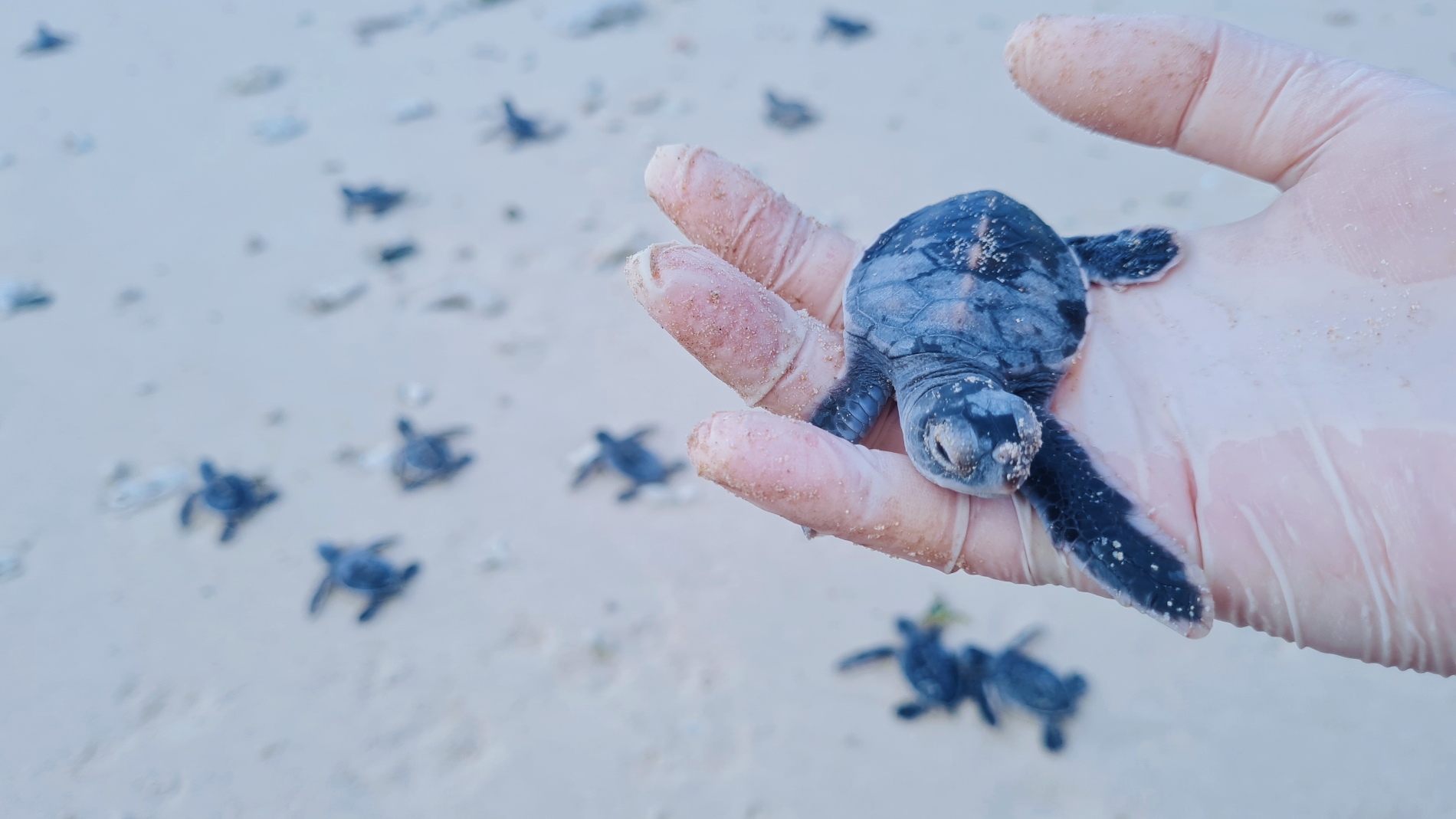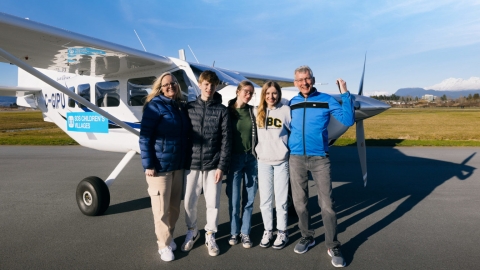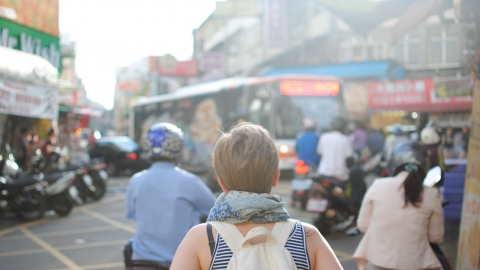Volunteer tourism is different from regular tourism in its purpose. The trip is a combination of sightseeing, relaxation, exploration with charitable and volunteer activities such as environmental protection, disaster prevention and recovery, material contributions to maintain educational activities or build facilities such as schools, houses, etc. This means that the person participating in the trip will be both a tourist and a volunteer.
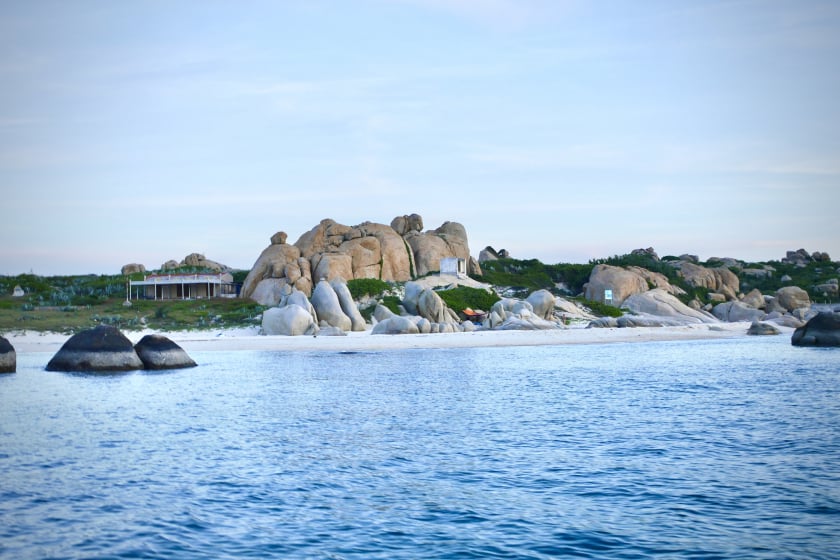
Hon Cau (Ninh Thuan) - one of the islands chosen by volunteers to experience every year
The journey begins on a summer day
Every year, IUCN (International Union for Conservation of Nature and Natural Resources) in collaboration with Con Dao National Park organizes a call for volunteers to participate in sea turtle conservation during the peak season when turtles lay eggs from June to September. This is a great opportunity for young people who love traveling, diving and protecting the environment.
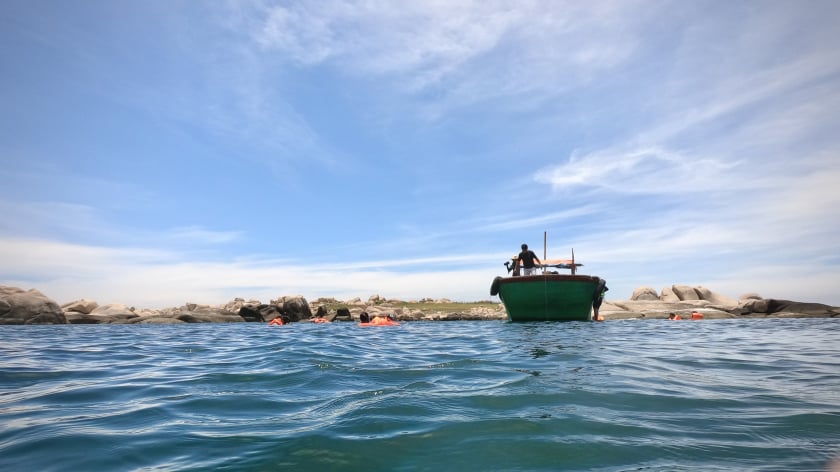
The marine environment is pristine and shows little sign of human impact.

Starry night at Hon Bay Canh (Con Dao)
Uyen Vu, a volunteer, shared with Travellive that every year, nearly a thousand applications are sent in, but only about a hundred volunteers are selected to support the islands of Bay Canh, Hon Cau, Hon Tau, Hon Tre Lon and Bai Duong. For turtles to choose to lay eggs, the beach there must maintain a clean, pristine environment with little sign of human influence. That is why each beach here is completely preserved in its original wildness, making anyone who comes here want to spend a part of their youth to explore the clear and pure beauty of nature.
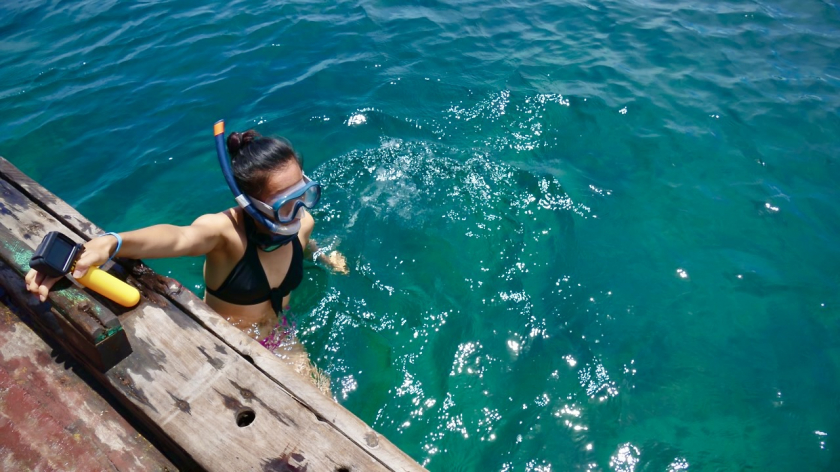
Uyen Vu - Volunteer for Sea Turtle Conservation and Rescue at Hon Cau, Binh Thuan, Phase IV September 12-18, 2020
Long-term travel on a budget
Unlike choosing a prime location when traveling, you will experience the rustic and simple life when staying at the local people's house, cooking and eating with them, borrowing their means of transport to travel. Compared to a normal trip, volunteer tourism only costs 1/5 of the cost. For example, tourists to Con Dao must rent a private canoe or travel company or book a tour at the National Park to go to the islands, while volunteers are supported by the National Park's ranger unit to pick up and drop off at Hon Bay Canh and Hon Cau.
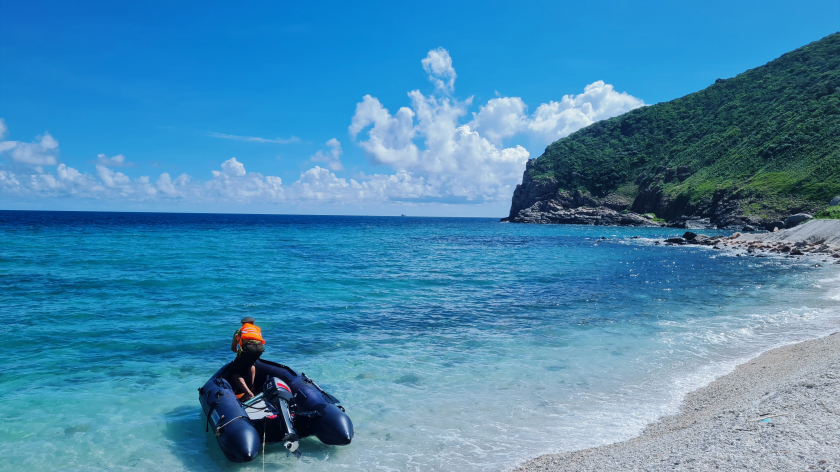
Hon Bay Canh with its pristine beauty is suitable for turtles to choose as a place to lay eggs.
In addition to the Sea Turtle Conservation Project, Con Dao National Park is also implementing a type of tourism combined with the experience of releasing baby turtles to raise awareness of animal and environmental protection for visitors. On average, each year, over 450 mother turtles come to the sandy beaches of Con Dao to nest and lay eggs. As a result, the number of baby turtles rescued, hatched and released into the sea is about 150,000 each year, accounting for 80% of the total number of turtle eggs in Vietnam's seas. However, for every 1,000 baby turtles released into the sea, only 1 can survive and grow up. Therefore, protecting turtle eggs to increase the rate of baby turtles being born is very important.
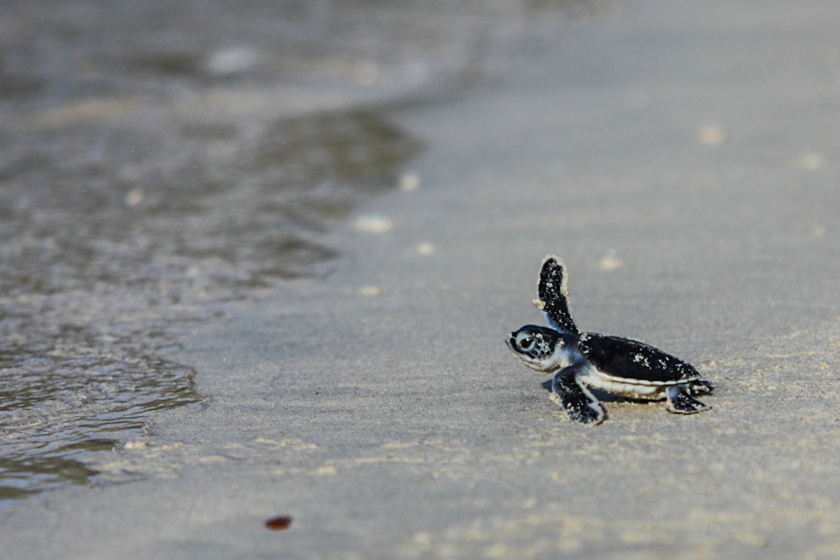
Increasingly harsh living environments are the main threat to the survival of sea turtles.
When tourism is combined with work and experiencing local life
At Hon Bay Canh, as a Sea Turtle Volunteer, a new day will start according to the schedule and activities of the rangers here. During the day, the volunteers will support the staff in planting trees, collecting and processing ocean waste, decorating and cleaning the station grounds, and guiding tourists to experience the turtle release.
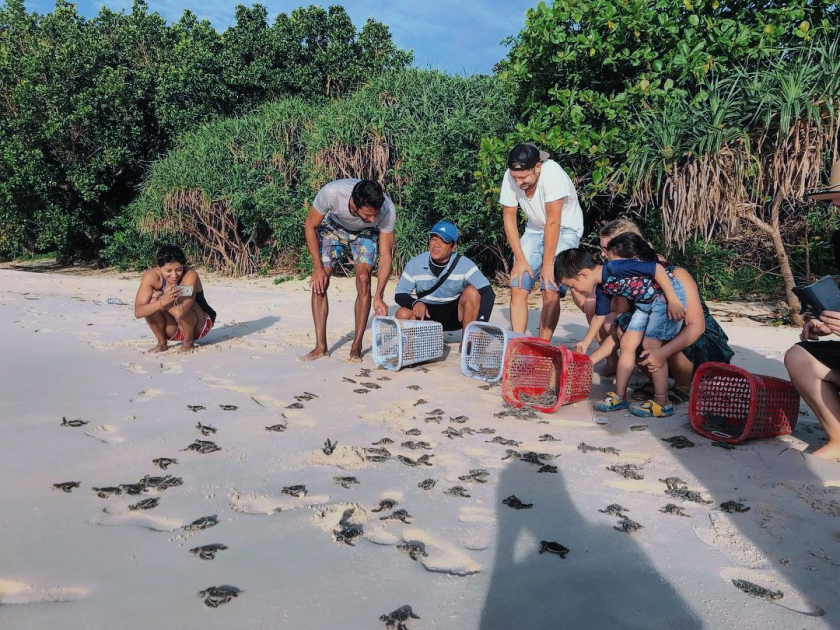
The baby turtle release activity is receiving a lot of support from tourists.
Most of the people who come to this journey are young people who love to "travel". After hours of active activities, trekking to isolated lighthouses or diving experiences are all associated with knowledge and stories about people and nature in this place.
"On that isolated lighthouse, there were 3 soldiers guarding and keeping company with 18 skinny dogs that looked very pitiful. We really admired them for not minding all the inconveniences to complete their mission and silently contributing to guarding and protecting our homeland's sea and islands," said Thuong Huyen - Volunteer of the Sea Turtle Conservation and Rescue Team in Con Dao, batch IV.
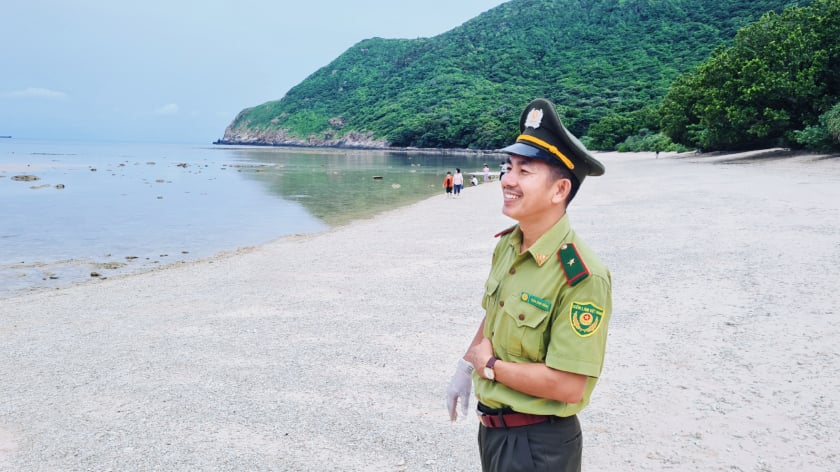
A ranger in charge of filling the egg pit with a gentle smile
And the most special activity is scuba diving to see coral. Scuba diving equipment such as life jackets, goggles, snorkels, and flippers can all be borrowed from the ranger station or from nearby residents. Diving lessons on how to avoid strong impacts on the coral and avoid injuries caused by coral are also enthusiastically instructed by the rangers here.
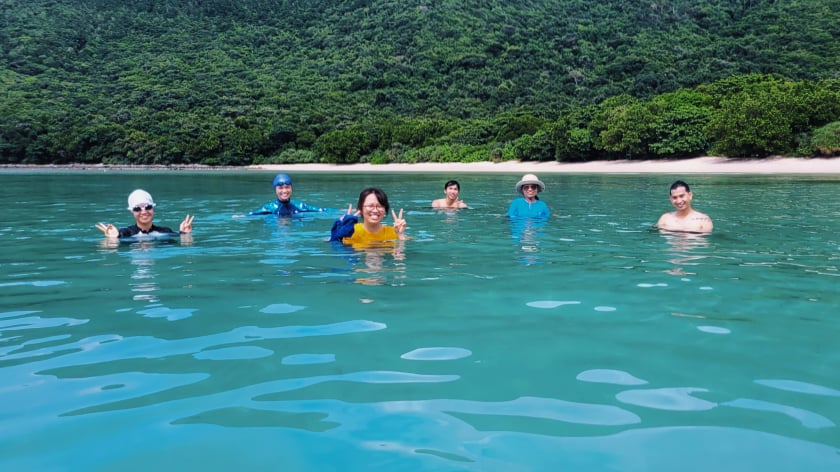
Volunteers learn to swim and dive together every morning

Diving activities take place almost every day.
With the characteristics of a shallow sea and clear water, just go down about 4-5 meters below the water level and you will encounter colorful corals, from branch corals, brain corals, to soft corals, cabbage corals. Schools of fish swimming around, sea cucumbers, and snails of impressive shapes such as the lady snail, elephant ear snail are enough to make anyone overwhelmed by the rich beauty of nature.
Huyen happily told Travellive that cooking time is also the most exciting time when everyone joins in cooking a home-cooked meal. Most of the food is home-grown or locally sourced, so every meal is very fresh and delicious.
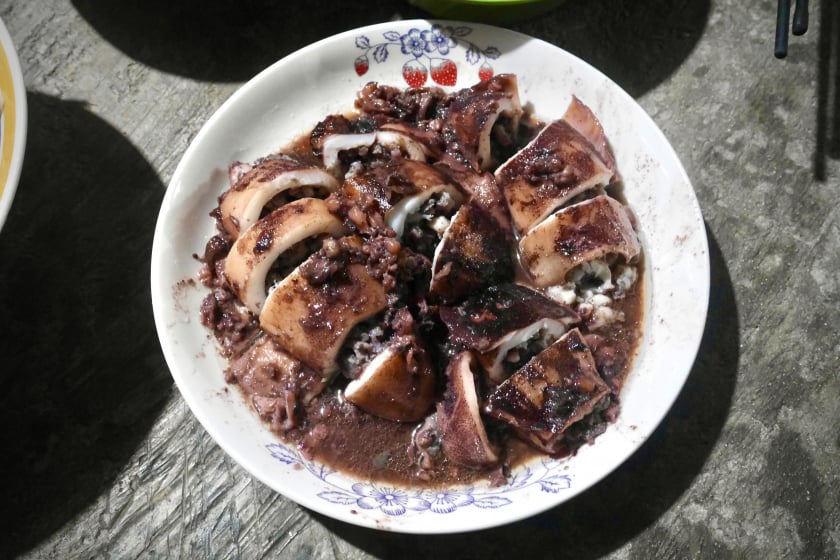
Fresh seafood is a specialty of the sea.
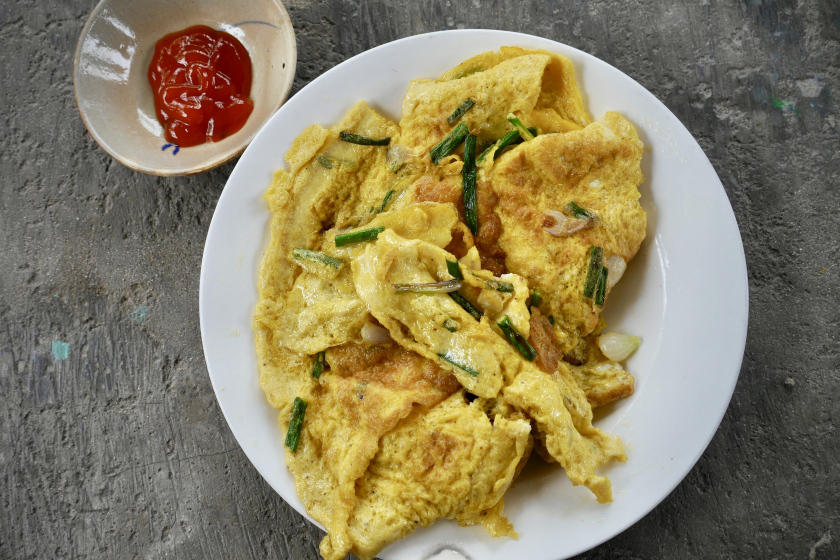
Simple fried egg meals
Nights lying listening to the waves and watching the turtles... "giving birth"
Most activities will take place late at night or early in the morning, according to the time of high tide. Mother turtles will follow the tide to the shore and return to the sea before the tide recedes. Depending on each beach, the number of turtles coming to lay eggs will be different. For example, at Bay Canh beach, nearly twenty mother turtles come ashore to lay eggs in one night, and the volunteers will have to divide the work. Within six hours after laying eggs, she and the volunteers will dig up the nest that the mother turtle had filled to move the nest to the incubation pond in the station. This helps the turtle eggs avoid other animals coming and eating all the turtle eggs, or another mother turtle digging a nest accidentally hitting the nest that had just been filled, and worst of all, people stealing the turtle eggs to bring back to sell.

Mother turtles are very sensitive to light so do not shine the light directly into their eyes.
And when the sky gradually brightens, if there are baby turtles emerging from the hatched eggs, the volunteers will start the work of that day, releasing them back to the sea. The first time holding the baby turtles in her arms, Huyen was extremely moved because she had contributed to the birth of this little life. The volunteers will place the baby turtles about 2-3 meters from the edge of the sea and let them crawl to the sea. This is also the distance and time they remember this place to return when it is time to breed.
Volunteer tourism is always a worthwhile journey.
Bringing baby turtles home is not only a volunteer tourism activity but also a deeply connected experience with nature that few tourism services can offer. When baby turtles have swum far from shore, they will surface and look towards the shore as if to say thank you to those who have cherished and cared for their eggs so that they can hatch and return home. Or maybe they want to remember where they were born so that one day they can return when they are adults. This look is the way nature is talking to all those who are trying to protect the life of this earth.

Baby turtles are memorizing the unique magnetic field of their birthplace and will return here in about 30 years.
Volunteer tourism is predicted to become one of the great travel trends for nature-loving souls who want to return to find themselves in the vastness, tranquility and positive energy of the ocean.





